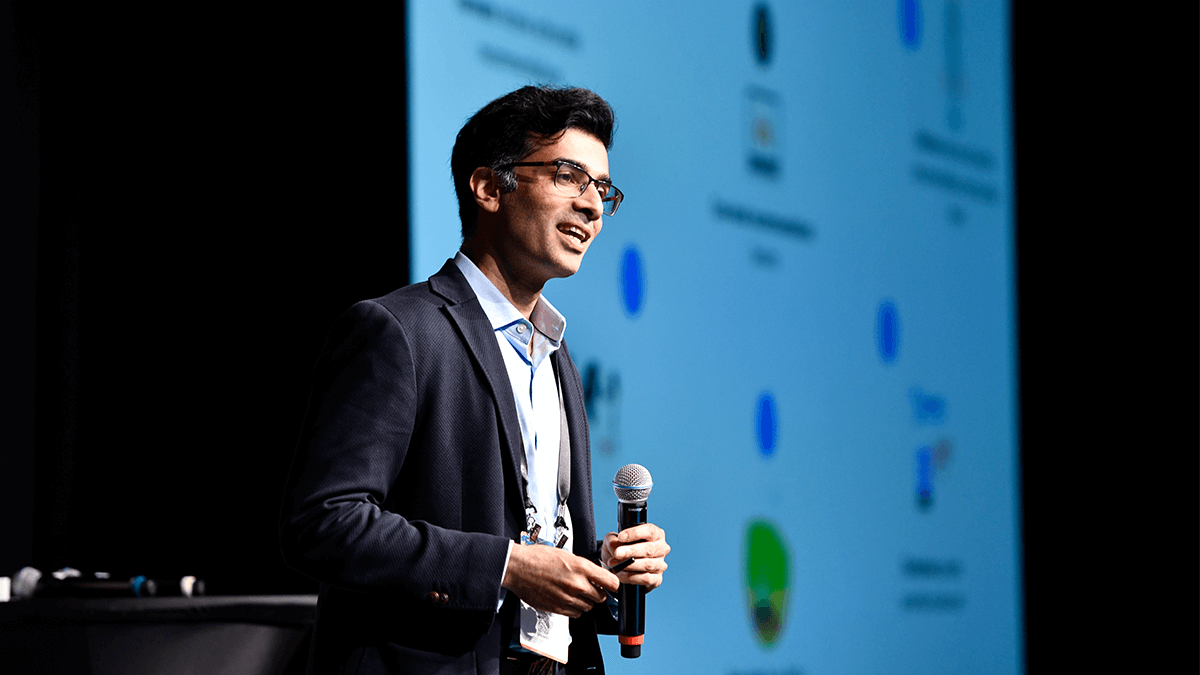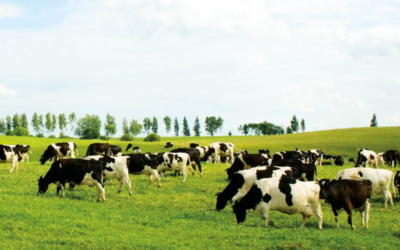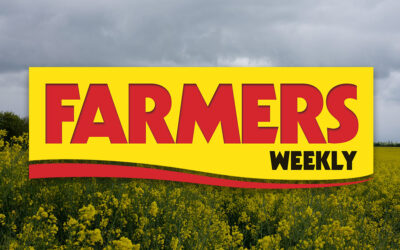Connecterra is using artificial intelligence (AI) to help dairy farmers increase productivity on-farm while reducing their impact on the planet. Yasir Khokhar, CEO and founder of Connecterra, joins the Ag Future podcast to discuss the importance of turning data into actionable insights and how programs like the Pearse Lyons Cultivator are helping ag-tech startups navigate the global food supply chain through commercial pilot projects.
The following is an edited transcript of the Ag Future podcast episode with Yasir Khokhar hosted by Tom Martin. Click below to hear the full audio or listen to the episode on Apple Podcasts, Spotify or Google Podcasts.
Tom: Welcome to Ag Future, presented by Alltech. Join us from the 2022 Alltech ONE Conference as we explore opportunities within agri-food, business and beyond.
The business startup is both beauty and beast, an idea or concept driven forward by passion and commitment but also a set of spinning plates that could come crashing down at any moment. For many, that tension is what makes the world of startup companies such an interesting and exciting place. It’s where you will find our guest on this episode of Ag Future.
I’m Tom Martin. With me is Yasir Khokhar, founder and CEO of Connecterra, an Amsterdam-based company, where Yasir focuses on the commercial side, structuring agreements with some of the world’s largest dairy brands and setting a strategic direction in partnership with the Connecterra executive team. Under his leadership, the company has grown from an idea to winning startup of the year at Web Summit in 2015, Google’s Demo Day in 2016, and Dell in 2017. Welcome to Ag Future, Yasir.
Yasir: Thank you for having me. It’s a pleasure to be here.
Tom: A bit more background, if we can. I understand that you led the transformation of Microsoft Office into a cloud business for the Middle East before heading up the Microsoft Office Business Unit for Western Europe. You authored the smart city strategy for the company, overseeing its global implementations. Tell us about smart city.
Yasir: I think that was the genesis of Connecterra in many ways. I was living in Dubai at the time, and they were building everywhere. I was tasked to come up with an idea of how we could use Microsoft technology in buildings. That’s kind of where I formed a vision of how we could make buildings more sustainable, more efficient, with energy use and all of that, using tech. That then translated into what is today Connecterra, in many ways.
Tom: That technology is now pretty pervasive, isn’t it?
Yasir: It is indeed. This was back in 2007, just before the subprime mortgage crisis.
Tom: Seems like a long time ago.
Yasir: Yes.
Tom: You relocated to Amsterdam. When you moved there, you moved next door to a Dutch dairy farm. Did that turn out to be something of an alignment of stars? How did that influence your thinking?
Yasir: It was. I think that was a watershed moment, because I was toying with this idea of sensors, which I’d gotten to know in my smart city days. I was looking at how farmers work. They’re working in fields, but there’s no data that they’re using to make decisions. What they are using was just absolutely archaic. I was like, “Well, surely, I can do better than this.” It started as a hobby to try and work with farms and see what could we do with data. That eventually translated into Connecterra. If I hadn’t moved to the farm, I wouldn’t have, perhaps, come up with this whole incentive to build something around it.
Tom: What are the challenges of the dairy industry that you address beyond that, bringing them along into technology?
Yasir: I think about this — there are three big categories of challenges that I see. First of all, dairy is an industry that is continuing to grow, despite what we might find in the media. Globally, dairy is still growing two to three percent. The average age of a farmer is 59 years. You have massive labor problems. Now, you need to transition this industry from its current status quo, which is known to be less sustainable than where it could be. You need to transition this industry to be more sustainable. You’ve got an aging workforce. You’ve got labor problems.
This is where technology has been known to make a huge difference in other industries. You can automate things. You can make better decisions. You can use data to really try and make farms more efficient and productive with the resources that you have. This is a big lift. This is not going to be easy. But I believe that there’s a massive difference that we can make with technology within the dairy space and transition this massive industry to its full potential.
Tom: Let’s say that the industry does that. What does it look like on the other side? What’s the potential?
Yasir: Let me put it this way. The average dairy cow globally does about 2,000 kilos of milk a day. If you take the world’s most efficient farms in Europe or the U.S., they’re doing about 10,000. That’s a 5x improvement in productivity. A lot of this productivity can come from automation and technology. Simple answer: You can make it five times more efficient and sustainable.
Tom: Is the industry making progress with transitioning operations to make the most of digital technology?
Yasir: I think it is. The COVID pandemic really accelerated a lot of this. We’re seeing this in our customers and partner engagements as well. Climate policy and what’s been happening in the whole net-zero transition has also come to dairy in a big way. A lot of the big players in the world — Arla, Danone, Fonterra, etc. — now have specific programs for regenerative agriculture, which is going even beyond net zero and saying, “Could we use livestock to store carbon and soil to store carbon in the ground?” Yes, these things (have) happened in the last two years. There is progress being made. It needs to go faster.
Tom: What do you see as the role of artificial intelligence in the future of dairy farming? How do you see AI technology working cohesively with human ingenuity?
Yasir: That’s something that we’ve been doing in Connecterra for a couple of years now. Artificial intelligence is a technology. It is not going to solve things on its own. You need to find the right use cases where you can apply it. One of the things that we’ve done with our technology, Ida, is use farmers to train an algorithm that can help you run the world’s most efficient farm. We’re actually using the wisdom of farmers who’ve been doing this for 20, 30 years, capturing that information with our data and training algorithms that can help you make better decisions.
These decisions lead to operational efficiencies. These decisions lead to sustainability insights, which can help you out on your net-zero transition. Very recently, we released a new machine learning model that can actually help farms reduce their carbon footprint by five to ten percent or more. I think it is the application of this technology in these spaces that is really key for this industry to move forward in the vision that I just outlined.
Tom: Well, often, with much of the technology that we’re talking about comes fresh data. What are your thoughts on avoiding data overload within agriculture versus actionable insights?
Yasir: That’s a great question. This was, again, one of our early insights as well when I started Connecterra, is there was too much data and still is too much data on farms. Farmers don’t have the time nor are they trained to analyze data to understand what it means. Technologies exist today — explainable AI, for instance, takes data, interprets it into insights. In my view, data needs to disappear. What needs to happen is that all of this data needs to be translated into very specific, understandable insights for the farmer and their stakeholders. We talk a lot about saying, “Oh, data is going to solve everything. It’s going to help you build better insights.” Yes, it’s the insights that (are) going to help you solve things.
Tom: So, it has to make sense.
Yasir: It has to make sense, and it has to be right.
Tom: And relevant, I suppose, to what’s happening on the ground.
Yasir: In the context of the farm.
Tom: You’ve been working with the Pearse Lyons Cultivator, which connects ag-tech startups to producers or other industry stakeholders. How crucial are pilot projects in forging a path to market for startups, especially for those that are trying to disrupt an industry?
Yasir: They’re absolutely essential. We’ve seen them being the first step for startups to break into the industry. It is not easy to get access to farms and farmers there. It’s an inherently fragmented industry. You need the support of large players to take these innovations that entrepreneurs and startups like us are making and bring them into the real environment. That’s where pilots really help. On the flip side, I would say that pilots need to be faster, more agile, and they need to be able to translate into specific rollouts. I think a lot of the problems with pilots tend to be (that) startups need to move fast (while) large companies move a little slow. That impedance mismatch does need a look at in a broad sense within the industry.
Tom: Is the startup space in the ag sector pretty crowded now? Is there a lot of activity there?
Yasir: Not enough.
Tom: Not enough. So, bring it on.
Yasir: Yep, absolutely.
Tom: Well, what are some other innovative agricultural startups that have grabbed your attention?
Yasir: I’m really intrigued with some of the startups that are working with satellite data, for instance. Vision came around in dairy. I think there are some interesting use cases around it. Satellite technology in some of the work that Planet is doing is super interesting. Google is working on a moonshot where they’ve coined this new phrase called computational agriculture. (There’s some) super interesting stuff going on over there. There’s a couple of these areas which I’m very intrigued with its early stages. These are very complicated problems to solve, but they’re very promising.
Tom: Shifting back to startups and just seeking a little bit of advice. What are some key obstacles to holding true to a business development plan?
Yasir: Speed.
Tom: Speed?
Yasir: Yeah.
Tom: Haste?
Yasir: Speed. Well, yes. Let me qualify that.
Tom: Okay.
Yasir: Startups, by definition, are young and prone to — they need to move fast. If you don’t move fast, you’re going to run into real problems when you’re running a startup. However, the ag industry doesn’t move at the speed where other industries move, where, typically, startups have been very successful, whether you take fintech, social, mobile, etc. Entrepreneurs and investors, as well as corporate, need to be very aware that ag things will take time. They need to be able to support startups in a manner which gives them the room that is needed for these cycles to happen. You can’t take the traditional VC model of Silicon Valley and apply it straight to ag-tech. It doesn’t really work. It makes things very risky for startups. As a consequence, I’d say the industry could move a little faster, and startups need to be more aware that things will take longer in ag.
Tom: That startup phase can always be grueling — a lot of long hours, a lot of late nights — but there are some rewards on the other end, right? What are the rewards of hanging in there through that rough and tumble startup phase?
Yasir: It’s the feeling that you’ve made a difference to a fundamental human activity called agriculture.
Tom: All right. I understand that you climb mountains.
Yasir: I do.
Tom: How do the challenges of mountain climbing influence your views about what you do in your work and about business?
Yasir: Resilience. When you’re climbing, your body will give out way before your mind will. In all of my different climbs, and if I chart my history, I’ve actually seen my mind change. When you’re climbing, it can be life and death. At times, you can be caught in a snowstorm. You can be caught up on a mountain, very exposed. You just got a cramp in your leg. You’ve just got to push through it, because if you don’t, you’re done. I think that mental resilience translates very well into startup land, because you’re going to have to go through a lot of tough decisions, a lot of tough situations, but you can’t give up. You’ve just got to keep going.
Tom: It’s Yasir Khokhar, founder and CEO of Connecterra, online at connecterra.io. Thank you, Yasir.
Yasir: Thank you, Tom.
Tom: For the Alltech Ag Future podcast, I’m Tom Martin. Thank you for joining us. Be sure to subscribe to Ag Future wherever you listen to podcasts.




